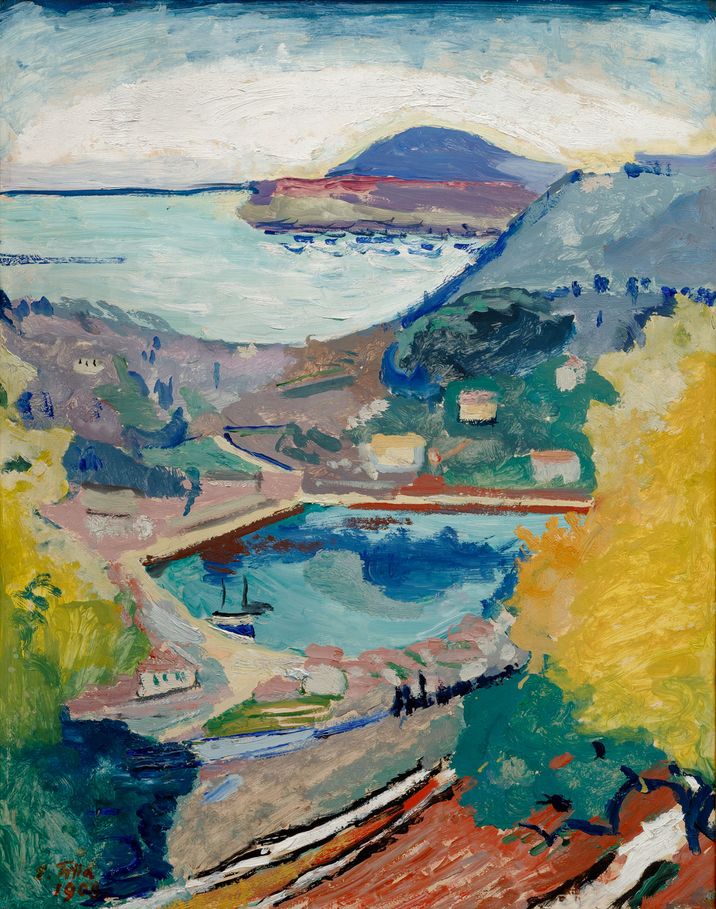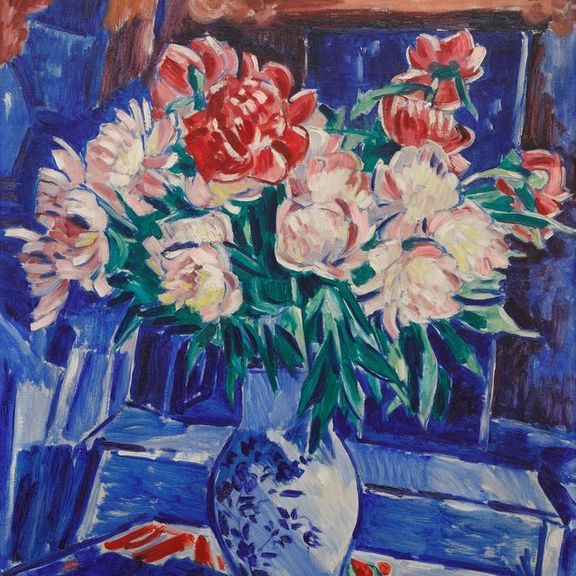
oil on cardboard
1908
lower left
66 × 50 cm
framed, glazed
Emil Filla’s extraordinary work entitled View over Gruž represents the early period of his work, when his life was briefly but firmly connected with the progressive artistic group Osma, of which he was even the leading representative. He had a wide range of intellectual interests, from the art of old masters through exotic art and the art of ancient civilizations to contemporary studies in physics, optics, and psychology. A rich source of knowledge about his interests and views on art are his diaries from 1906–1907, in which he also stated his interest in the spiritual qualities of paintings. He was probably inspired by the exhibition of Edvard Munch in Prague in 1905, which most likely stimulated the founding of the group Osma and also influenced its ideological and artistic direction. The international cultural environment of Prague at that time, where intellectual influences from Vienna, Munich, Berlin, and Paris were mixed, also had a great influence. The group Osma, although it existed for only two years, had a significant impact on the further direction of modern art in Czechoslovakia. Filla derived the emphasis on the supranational approach in culture from works of Nietsche and ideas of T. G. Masaryk. He adopted the idea that the artist must imprint his soul, his faith, and therefore also his values into the artworks. He applied these values in practice during his visit to Dubrovnik in 1908, where he travelled together with his friend, the Moravian writer Josef Uher. During this stay, Filla executed a number of paintings depicting the north-west suburb of Dubrovnik, Gruž. The presented artwork is full of psychological tension as well as the artist’s own spiritual values. Impressive relaxed brushwork together with thoughtfully chosen colours full of psychic vibrations forms the landscape with the port and the hill Srđ. The fresh performance and combination of glazing colours with intense coloured surfaces demonstrate Filla’s masterfulness and, at the same time, strict intellectual basis of each scene. View over Gruž represents not only a unique piece of art, but also illustrates Filla’s immense talent and early intellectual interests, which led him to his way of thinking about world art and culture. He was able to synthesise his knowledge into his very own artistic expression, which remains one of the most remarkable modern artistic expressions of all time. The work was probably exhibited in 1908 in Topičův salon at the second exhibition of the Osma group under the title Landscape. It will be listed in the inventory of the artist’s work by prof. PhDr. V. Lahoda, CSc. Assessed during consultations by Mgr. T. Donné and PhDr. R. Michalová, PhD. From the attached expertise by PhDr. K. Srp: “[…] Filla clearly dematerialised the foreground to materialise the background with a typical round hill, separated from the sea by a red-violet-beige belt that catches the beholders’ attention. The painting is not only an important work from the beginning of Filla’s development for him personally, but it can be ranked among one of the most beneficial paintings of the emerging young generation, which pointed to new paths of Czech painting on its way towards the European painting. It is a work of extraordinary value. […]”







